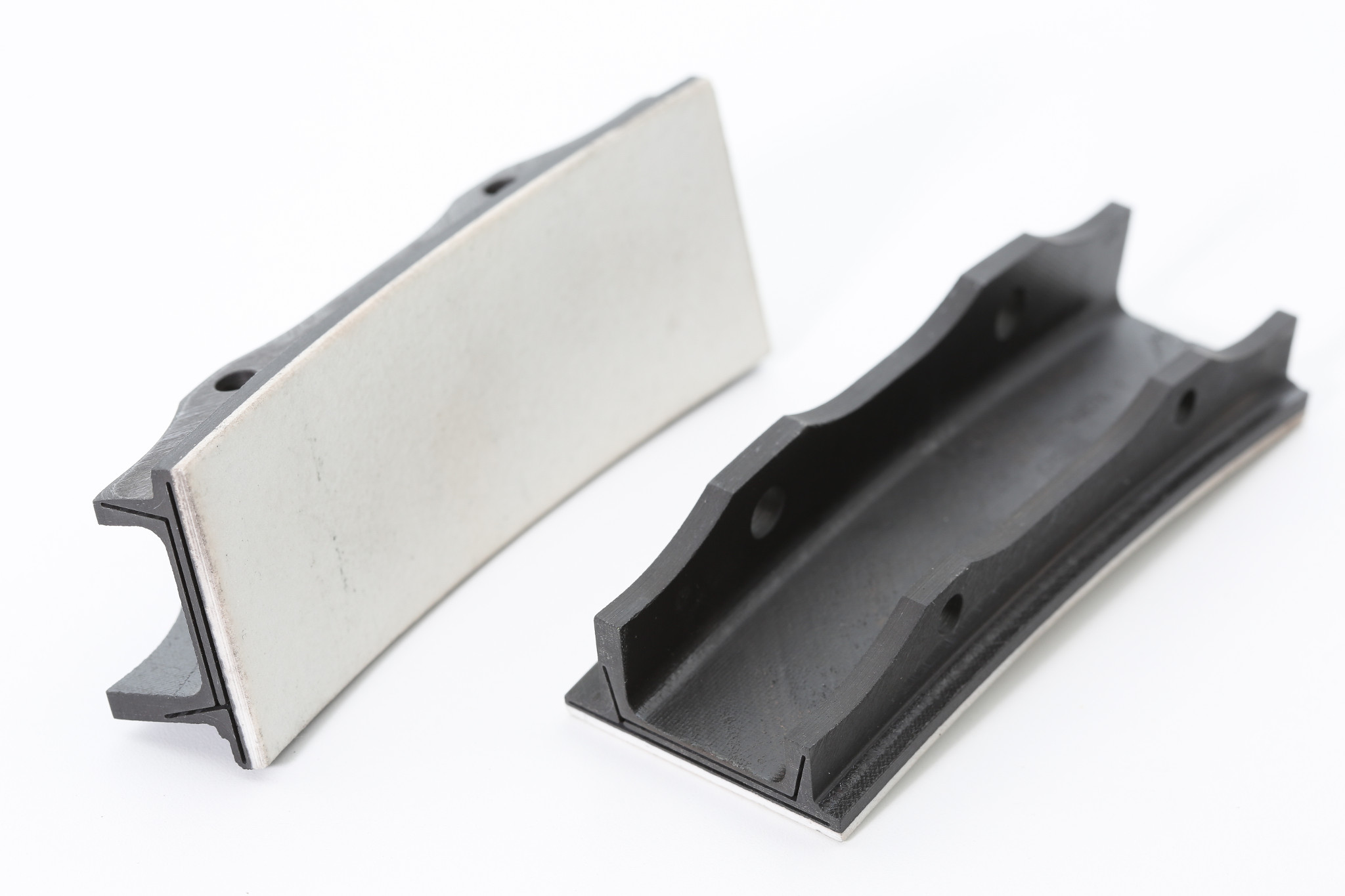- Receives the 2019 Corporate Technical Achievement Award for success in developing and bringing CMCs to market in flight
- GE’s CMCs entered commercial service in 2016 with the introduction of the CFM-LEAP for narrow-body aircraft
- The new GE9X engine coming online in 2020 will expand the number of CMC components in the engine to five
- CMCs achievement a major milestone as GE’s Aviation business celebrates its 100th Anniversary today
NISKAYUNA, NY – July 12, 2019 - Leapfrogging 40 years of superalloy research in a single bound, the successful commercialization of GE’s CMCs into jet engines fulfilled a more than half-century dream of the ceramics industry that many had thought might never come. This achievement was recognized by the American Ceramics Society with the prestigious 2019 Corporate Technical Achievement Award.
The integration of ceramic parts is revolutionizing the performance and efficiency of aircraft engines. With part temperature tolerances 300 degrees higher vs. metal and durability to match, CMCs are enabling engines to be run with lower emissions, fuel burn and higher thrust. Their introduction has helped make GE Aviation the clear market leader in the sale of engines for narrow-body aircraft.
“It took 40 years of steady improvements to raise the temperature tolerance of metals by 300 degrees F,” said Jim Vartuli, CMCs Platform Leader at GE Research where the technology was initially developed. “The introduction of CMCs in 2016 instantaneously added 300 degrees F over the most heat tolerant metals.”
GE’s CMCS, which stand for ceramic matrix composites, exploit the higher heat tolerances of ceramic materials while also being uniquely engineered to be as durable as metal. For decades, the ceramics community had grappled with how to solve the poor mechanical toughness of ceramics. GE’s CMCs technology was able to solve that problem.
“It wouldn’t be embellishing to say that many in ceramics research community thought a better chance existed for pigs to fly than ceramics,” said Jim Vartuli, CMCs Platform Leader at GE Research where the technology was developed. “A group of scientists published a report to this effect entitled, ‘Will pigs fly before ceramics do?’ Their findings were well founded, pointing to a laundry list of technical barriers and major investments that would be required to overcome them. But GE had a few intangibles working in our favor. Especially a deeply committed Aviation business that had the courage to be first in a new technology, to create a new set of design rules, and to invest in building an entirely new supply chain.”
One of the intangibles that is unique to GE, Vartuli explained, was GE’s Power business. “Our CMCs research program actually started as an initiative to develop new components for our gas turbines used in power generation,” Vartuli said. “It was early testing of CMC components in these land-based platforms that gave us the long-time, high-temperature data, knowledge and ultimately, the confidence that they could thrive in a jet engine environment as well.”
GE’s research in CMCs started in the late 1980s at GE’s Research Lab in Niskayuna, NY, led by Krishan Luthra, who today is Lab’s Chief Materials Scientist. Through early programs with the US Department of Energy, Luthra and his team were able to make steady advances with the program that culminated in their successful field testing in GE’s gas turbines.
While the CMC components proved to be ready, the power market was not. But instead of the program hitting a dead end, a pivotal decision was made by GE’s leadership to bring the technology to GE’s Aviation business. The Aviation business had to rethink the design of engine components to leverage the unique ceramic capabilities instead of replicating metallic component designs. Additionally, the business made the significant investments required to complete the development of CMCs and build up the manufacturing infrastructure and network essentially from scratch. To learn more, check out GE Research’s -Behind the Breakthrough article chronicling the development and commercialization of CMCs.
About GE Research
GE Research is GE’s innovation powerhouse where research meets reality. We are a world-class team of scientific, engineering and marketing minds working at the intersection of physics and markets, physical and digital technologies, and across a broad set of industries to deliver world-changing innovations and capabilities for our customers. To learn more, visit our website at https://www.ge.com/research/.
